地球与空间科学学院 • 副教授
办公地址:北京大学理科二号楼8楼
电子邮件:yue.han@pku.edu.cn
 岳汉
岳汉
地球与空间科学学院 • 副教授
办公地址:北京大学理科二号楼8楼
电子邮件:yue.han@pku.edu.cn
English Website: http://geophy.pku.edu.cn/pubtphp/yuehan/english/
教育以及科研经历:
2007 北京大学地球物理专业 学士
2010 北京大学地球物理专业 硕士
2014 加州大学圣克鲁兹分校 博士
2014-2017 加州理工大学 博士后
2017-2023 北京大学地球物理专业 助理教授/特聘研究员
2023-今 北京大学地球物理专业 副教授/特聘研究员
荣誉及人才计划
2021 中国地震协会李善帮青年科技成果奖(一等奖)
2016 国家级人才计划青年项目入选者
2014 加州理工大学地震实验室博士后奖学金
2013 教育部优秀自费留学生奖学金
学术任职
2021- JGR:Solid Earth 副主编
1.大地震动态破裂过程
解析地震动态破裂过程是解决地震灾害问题的关键基础研究。当今,该研究不仅涉及地震学,同时涉及大地测量学,影像遥感,地震地质研究以及海洋流体力学等多种观测手段的联合应用,联合反演地震的动态破裂过程。联合反演能够结合多种数据对于时间,空间以及位错解析度的不同敏感性,得到稳定的高精度破裂模型。
在联合反演的同时,不同反演方法(线性多时窗以及贝叶斯非线性反演)以及震源参数化方法(有限断层以及多点源)的应用,也给震源反演提供了更多角度的约束。下图为2016 年日本熊本地震同震破裂模型。
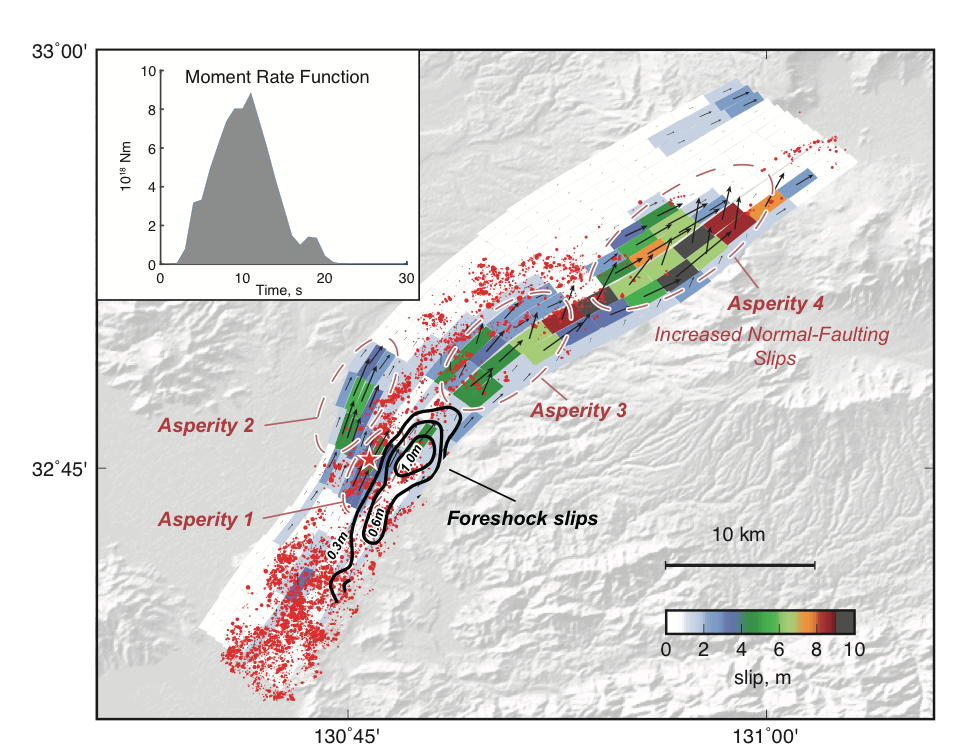
岳汉的大地震研究也涉足震源成像方法。通过全球以及局域范围台网数据的偏移成像方法,可以提取大量跟破裂相关的信号。而地震波传播过程中产生的波形通常与震源能量混合造成成像假象。岳汉的研究涉及地震波传播产生的局域化水波,及其在震源成像中的影响。下图为2012年印度洋底地震的模拟波形,以及模拟成像结果与观测成像结果的对比。

2. 微地震的识别和检测
断层在发生大地震破裂之外也会频繁发生微弱的地震行为,这些地震行为对于断层的锁定状态,加载卸载速率,以及断层界面性质等方面有着重要的指示作用。因此研究断层面上的微地震活动状态是研究断层破裂危险性的重要手段。岳汉的研究同时涉及通过台站布设以及算法改进等方面检测断层上微弱的地震活动性。
在2017年九寨沟地震之后,岳汉及周仕勇课题组深入震区,布设了80个短周期地震仪。用于观测该次地震产生的余震活动。该台网采用了小孔径子台网的布设方式,由9个子台网组成。并且通过信号加强算法提取每个子台网所记录到的微震信号。下图为每个子台网内部的台站分布。
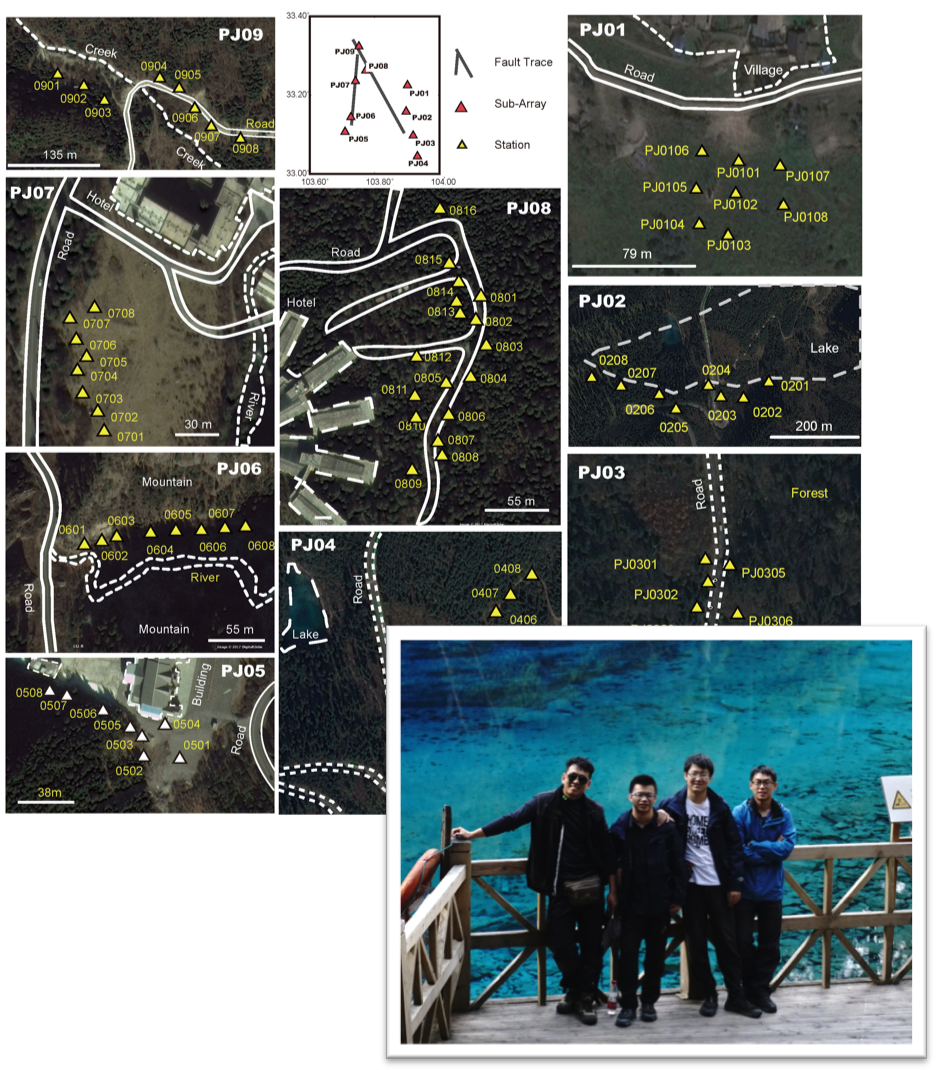
人工智能以及深度学习算法在识别问题上有广泛而且准确的应用。而其在地震学里最直接的应用是震相识别。岳汉近期的科研方向涉及将卷积神经网络以及递归神经网络应用到震相识别应用中。通过手动标记的震相到时训练卷积神经网络对P和S波的波形进行标定。正确率达到95%。下图为神经网络训练流程图。

3. 断层物理过程
断层可以发生地震这种剧烈的能量释放过程,也可以发生缓慢的应力释放过程。这些蠕变过程直接影响到断层的应力积累和释放, 并且可能跟大地震发生的前兆直接相关。因此,研究这些断层的瞬态过程可能对于地震预测问题给出有效的解决方法。岳汉在2016熊本地震的研究中,在GPS信号中发现了主震前几小时可能存在的一个瞬态信号。该信号源位于主震震源附近,其发生可能加载了主震震源附近的应力场,并直接触发了主震的发生。下图为熊本震前的GPS形变场以及微震活动性分析。
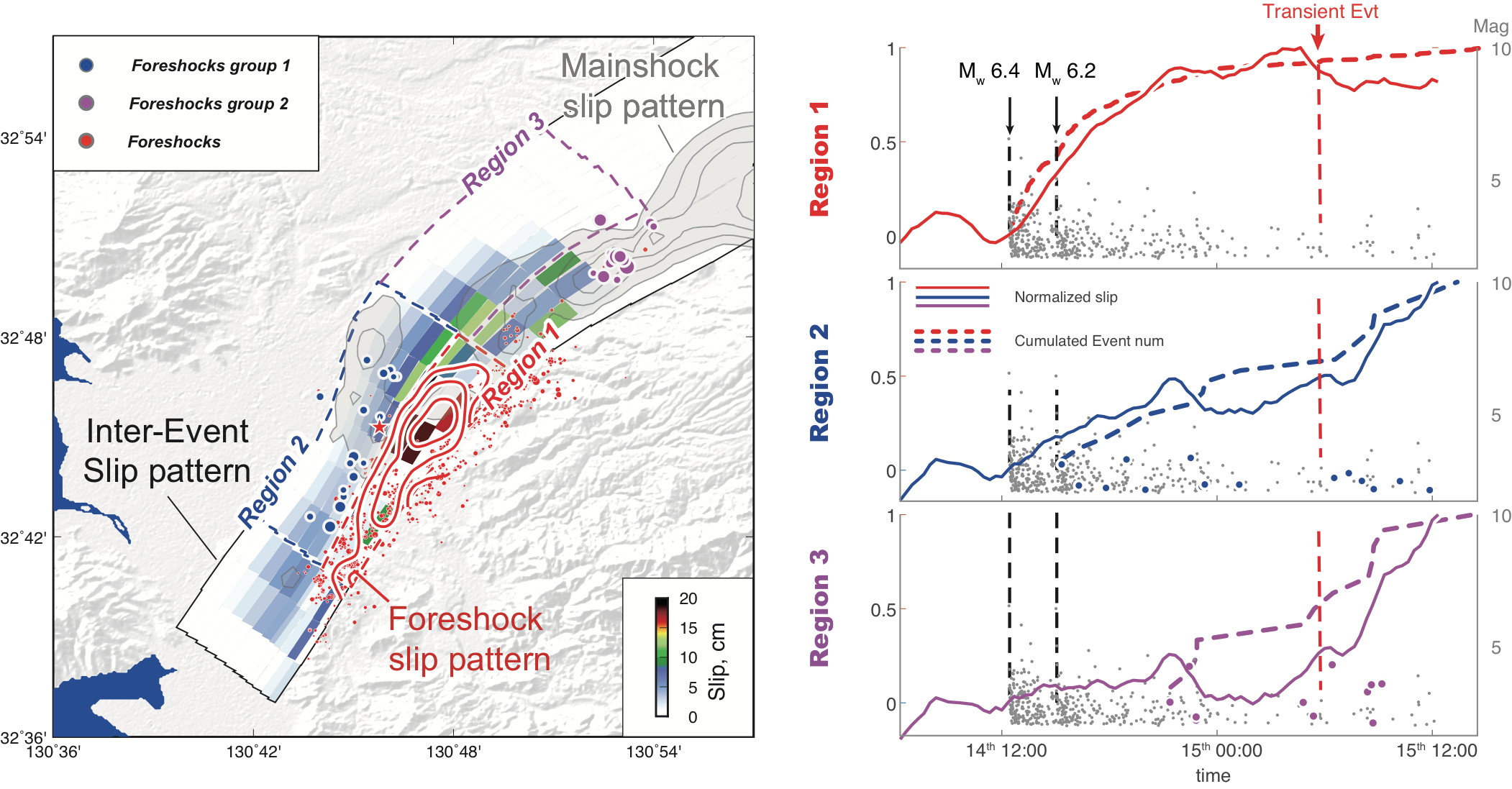
岳汉的研究工作涉及将微地震活动性,蠕变过程,同震过程等多种物理机制融合,从而探究断层带的物理机制以及应力状态。并期望通过这些研究增加对于断层系统的理解,从而为解决地震灾害问题做出贡献。
2024
47. C Ren, Z Wang, T Taymaz, N Hu, H Luo, Z Zhao, H Yue*, X Song*, Z Shen, H Xu, J Geng et al. Supershear triggering and cascading fault ruptures of the 2023 Kahramanmaraş, Türkiye, earthquake doublet[J]. Science, 2024, 383(6680): 305-311.
46. Lu W, Zhao Z, Yue H*, et al. The accessible seismological dataset of a high-density 2D seismic array along Anninghe fault[J]. Earthquake Science, 2024, 37(1): 67-77.
2023
45. Lu R, Yue H*, Lai X, et al. Quakes of Compact Stars[J]. Monthly Notices of the Royal Astronomical Society, 2023: stad270.
44. Zhao, Z., & Yue, H.* (2023). A two-step inversion for fault frictional properties using a temporally varying afterslip model and its application to the 2019 Ridgecrest earthquake. Earth and Planetary Science Letters, 602, 117932.
2022
43. Yue H*, Wang K., Xue L., Shen Z. Sun J., Postseismic process inversion using full time series of surface deformation: Full Time-series Inversion (FTI) theory and its application to the 2017 Sarpol-e Zahab earthquake, JGR: Solid Earth, e2021JB023317.
42. Ren C, Yue H*, Cao B, et al. (2022) Rupture process of the 2020 Mw= 6.9 Samos, Greece earthquake on a segmented fault system constrained from seismic, geodetic, and tsunami observations[J]. Tectonophysics, 839: 229497.
41. Yun N, Yue H*, Zhou S, et al. (2022) Absolute tectonic stress inversion in the 2016 Mw 7.0 Kumamoto earthquake source region using topography and rupture models[J]. JGR: Solid Earth, 127(8): e2021JB023204.
40. Zhou Y, Yue H, Zhou S, et al. Microseismicity along Xiaojiang Fault Zone (Southeastern Tibetan Plateau) and the characterization of interseismic fault behavior[J]. Tectonophysics, 2022, 833: 229364.
39. Zhou, Y., Ren, C., Ghosh, A., Meng, H., Fang, L., Yue, H., ... & Su, Y. (2022). Seismological Characterization of the 2021 Yangbi Foreshock‐Mainshock Sequence, Yunnan, China: More than a Triggered Cascade. JGR: Solid Earth, e2022JB024534.
38. Wang Z, Yue H*. (2022) Resolving Shallow Moment Releases of Megathrust Earthquakes by Empirical Green’s Function‐Based Inversions: A New Approach for Tsunami Warning[J]. JGR: Solid Earth, 127(7): e2021JB023765.
37. Yue H*, Shen Z K, Zhao Z, et al. (2022) Rupture process of the 2021 M7. 4 Maduo earthquake and implication for deformation mode of the Songpan-Ganzi terrane in Tibetan Plateau[J]. Proce. Nat. Ac. Sci., 2022, 119(23): e2116445119.
36. Lu, W., Zhou, Y., Zhao, Z., Yue, H.*, & Zhou, S. (2021). Aftershock sequence of the 2017 M w 6.5 Jiuzhaigou, China earthquake monitored by an AsA network and its implication to fault structures and strength. GJI, 228(3), 1763-1779.
35. Jia, B., Yue, H.*, & Muzli, M. (2021). Absence of Near‐Trench Early Triggering during the 2012 Mw 7.2 Indian Ocean Strike‐Slip Earthquake: Evidence from One‐Day Aftershocks. SRL.
2021
34. Yue, H.*, Sun, J., Wang, M., Shen, Z., Li, M., Xue, L., & Lay, T. (2021). The 2019 Ridgecrest, California earthquake sequence: Evolution of seismic and aseismic slip on an orthogonal fault system. EPSL, 570, 117066.
33. Guns, K. A.*, Pollitz, F. F., Lay, T., & Yue, H. (2021). Exploring GPS observations of postseismic deformation following the 2012 MW7. 8 Haida Gwaii and 2013 MW7. 5 Craig, Alaska earthquakes: Implications for viscoelastic Earth structure. JGR:Solid Earth, 126(7), e2021JB021891.
32. Zhou, Y., Yue, H., Fang, L., Zhou, S.*, Zhao, L., & Ghosh, A. (2021). An earthquake detection and location architecture for continuous seismograms: phase picking, association, location, and matched filter (PALM). SRL.
31. Ren, C., Yue, H.*, Wang, T., & Zhao, Z. (2021). Source rupture model of the 2018 M W 6.7 Iburi, Hokkaido earthquake from joint inversion of strong motion and InSAR observations. Earthquake Science, 34(1), 88-101.
2020
31. An, C., Shawn Wei, S., Cai, C., & Yue, H. (2020). Frequency limit for the pressure compliance correction of ocean‐bottom seismic data. Seismological Research Letters, 91(2A), 967-976.
30. Yue, H. *, & Lay, T. (2020). Resolving complicated faulting process using multi‐point‐source representation: Iterative inversion algorithm improvement and application to recent complex earthquakes. Journal of Geophysical Research: Solid Earth, 125(2), e2019JB018601.
29. Yue, H.*, Zhang, Y., Ge, Z., Wang, T., & Zhao, L. (2020). Resolving rupture processes of great earthquakes: Reviews and perspective from fast response to joint inversion. Science China Earth Sciences, 63(4), 492-511.
2019
28. Yun N, Zhou S*, Yang H*, Yue H. & Zhao L , (2019). Automated Detection of Dynamic Earthquake Triggering by the High‐Frequency Power Integral Ratio[J]. Geophysical Research Letters, 44(22), doi.org/10.1029/2019GL083913
27. Lo, Y. C., Yue, H.*, Sun, J., Zhao, L., & Li, M. (2019). The 2018 Mw6. 4 Hualien earthquake: Dynamic slip partitioning reveals the spatial transition from mountain building to subduction. Earth and Planetary Science Letters, 524, 115729.
26. Zhou, Y., Yue, H.*, Kong, Q., & Zhou, S. (2019). Hybrid Event Detection and Phase‐Picking Algorithm Using Convolutional and Recurrent Neural Networks. Seismological Research Letters, 90(3), 1079-1087.
2018
25. Xibin T*, Yue H., Yiduo L, Yiduo Liu, Xiwei Xu, Feng Shi, Chong Xu, Zhikun Ren, J Bruce H Shyu, Renqi Lu, Haijian Hao, Topographic loads modified by fluvial incision impact fault activity in the Longmenshan thrust belt, eastern margin of the Tibetan plateau[J]. Tectonics, 2018, 10.1029/2017TC004864
24. Yue, H.*, Yijian Zhou, Shiyong Zhou, Li M, Huang Y., Zhou L., Liu Z.,. The 2017 Jiuzhaigou Earthquake Aftershock‐Monitoring Experimental Network: Network Design and Signal Enhancement Algorithm[J]. Seismological Research Letters, 2018, 89(5): 1671-1679.
23. Sun J, Yue H*, Shen Z, Zhan Y. Fang L. Zhan Y., Sun X., The 2017 Jiuzhaigou earthquake: A complicated event occurred in a young fault system[J]. Geophysical Research Letters, 2018, 45(5): 2230-2240.
22. Wang W., Luo R., Yue H., Chen,X., Lee, K., Xu, R., FRB 121102: A Starquake-induced Repeater?[J]. The Astrophysical Journal, 2018, 852(2): 140.
2017
21. Yue, H. *, Z. E. Ross, C. Liang, S. Michel, H. Fattahi, E. Fielding, A. Moore, Z. Liu, and B. Jia, The 2017 Kumamoto earthquake: a significant event in a fault-volcanic system. JGR: Solid Earth 2017, 122(11): 9166-9183.
20. Yue H*. J. Castol, C. Yu, L. Meng, Z. Zhan. Localized water reverberation phase and its impact on back-projection results. GRL, 2017, 44(19): 9573-9580.
19. Chao A. Yue H. Sun J*. Meng L. Two-stage rupture process of the 2015 Illapel earthquake. BSSA, 2017, 107(5): 2416-2426.
2016
18. L. Li, K.F. Cheung, Yue H., T Lay and Yefei Bai, Effects of dispersion in tsunami Green’s functions and implications for joint inversion with seismic and geodetic data: a case study of the 2010 Mentawa. GRL,2016,43(21)
17. S Xu, E Fukuyama, Yue H., JP Ampuero Simple Crack Models Explain Deformation Induced by Subduction Zone Megathrust Earthquakes, BSSA, 2016, 106(5): 2275-2289.
16. Yue H. , Simons M., Duputel Z. Jiang J., Fielding E., Liang C., Owen S., Moore A., Riel B., Ampuero J.P. and Samsonov S.V., Depth varying rupture properties during the 2015 Mw 7.8 Gorkha (Nepal) earthquake, Tectonophysics. http://dx.doi.org/10.1016/j.tecto.2016.07.005
2015
15. Yue H, Lay T, Li L, et al. Validation of linearity assumptions for using tsunami waveforms in joint inversion of kinematic rupture models: Application to the 2010 Mentawai Mw 7.8 tsunami earthquake[J]. Journal of Geophysical Research: Solid Earth, 2015, 120(3): 1728-1747.
14. Hill E., Yue H., Barbot S., Hubbard J. Lay T., Hermawan I., Tapponnier P. Banerjee P., Feng L., Natawidjaja D. Sieh K. The 2012 Mw 8.6 Wharton Basin earthquake from joint inversion of high-rate GPS and teleseismic data: Thermal runaway on young faults. J. Geophys. Res. . 2015, DOI: 10.1002/2014JB011703
2014
13. Yue H, Lay T, Rivera L, et al. Localized fault slip to the trench in the 2010 Maule, Chile Mw= 8.8 earthquake from joint inversion of high‐rate GPS, teleseismic body waves, InSAR, campaign GPS, and tsunami observations[J]. J. Geophys. Res., 2014,: DOI: 10.1002/2014JB011340
12. Yue H, Lay T, Rivera L, et al. Rupture process of the 2010 Mw 7.8 (2014), Mentawai tsunami earthquake from joint inversion of near‐field hr‐GPS and teleseismic body wave recordings constrained by tsunami observations. J. Geophys. Res., 2014, 119(7): 5574-5593.DOI: 10.1002/2014JB011082
11. Lay T, Yue H, Brodsky E E, et al. The 1 April 2014 Iquique, Chile, Mw 8.1 earthquake rupture sequence. Geophys Res. Lett., 2014. DOI: 10.1002/2014GL060238
2013
10. Yue, H., T. Lay, J. T. Freymueller, K. Ding, L. Rivera, N. A. Ruppert, and K. D. Koper (2013), Supershear rupture of the 5 January 2013 Craig, Alaska (Mw 7.5) earthquake, J. Geophys. Res. 2013JB010594;doi:10.1002/2013JB010594
9. Yue H., T. Lay, S. Y. Schwartz, L. Rivera, M. Protti, T. H. Dixon, S. Owen and A. V. Newman, (2013) The 5 September 2012 Nicoya, Costa Rica Mw 7.6 earthquake rupture process from joint inversion of high-rate GPS, strong-motion, and teleseismic P wave data and its relationship to adjacent plate boundary interface properties. J. Geophys. Res. 2013JB010187 doi:10.1002/jgrb.50379
8. Yue, H. and T. Lay (2013), Source Rupture Models for the Mw 9.0 2011 Tohoku Earthquake from Joint Inversions of High-Rate Geodetic and Seismic Data. Bull. Seis. Soc. Amer. May 2013103:1242-1255; doi:10.1785/0120120119
2012
7. Yue, H, T. Lay and K. D. Koper (2012), En Echelon and Orthogonal Fault Ruptures of the 11 April 2012 Great Intraplate Earthquakes. Nature, 490, 245-249, doi:10.1038/nature11492.
6. Yue, H., Y. J. Chen, E. Sandvol, J. Ni, T. Hearn, S. Zhou, Y. Feng, Z. Ge, A. Trujillo, Y. Wang, G. Jin, M. Jiang, Y. Tang, X. Liang, S. Wei, H. Wang, W. Fan, and Z. Liu (2012), Lithospheric and upper mantle structure of the northeastern Tibetan Plateau, J. Geophys. Res., 117, B05307, doi:10.1029/2011JB008545.
5. Lay, T., H. Kanamori, C. J. Ammon, K. D. Koper, L. Ye, H. Yue, and T. M. Rushing (2012), Depth-varying rupture properties of subduction zone megathrust faults, J. Geophys. Res., 117, B04311, doi:110.1029/2011JB009133.
2011
4. Yamazaki, Y., T. Lay, K. F. Cheung, H. Yue, and H. Kanamori (2011), Modeling near-field tsunami observations to improve finite-fault slip models for the 11 March 2011 Tohoku earthquake, Geophys. Res. Lett., 38, L00G15, doi:10.1029/2011GL049130.
3. Yue, H., and T. Lay (2011), Inversion of high-rate (1 sps) GPS data for rupture process of the 11 March 2011 Tohoku earthquake (Mw 9.1), Geophys. Res. Lett., 38, L00G09, doi:10.1029/2011GL048700.
2010 - previous
2. Wei, S.,Y. J. Chen, E. Sandvol, S. Zhou, H. Yue, G. Jin et. al. (2010), Regional earthquakes in northern Tibetan Plateau: Implications for lithospheric strength in Tibet, Geophys Res. Lett, 37(19), L19307.
1. Yue H., Zhang Z. and Chen Y. J., (2008) Interaction between adjacent left-lateral strike-slip faults and thrust faults: the 1976 Songpan earthquake sequence. Chiness Sci. Bull. Volume 53, Number 16, 2520-2526, DOI: 10.1007/s11434-008-0210-z.
博士生

任春美
2018级直博生
![]()
研究方向:
大地震破裂过程联合反演
![]()
 陆威帆
陆威帆
2019级直博生
研究方向:
微地震的检测拾取以及断层面重构
 运乃丹
运乃丹
2018 级硕博生
研究方向:
动态触发的拾取
绝对应力场反演
 赵泽严
赵泽严
2019 级硕士生
研究方向:
断层蠕变的动力学模拟

王泽鑫
2020级直博生
研究方向:
基于远震经验格林函数的破裂过程反演
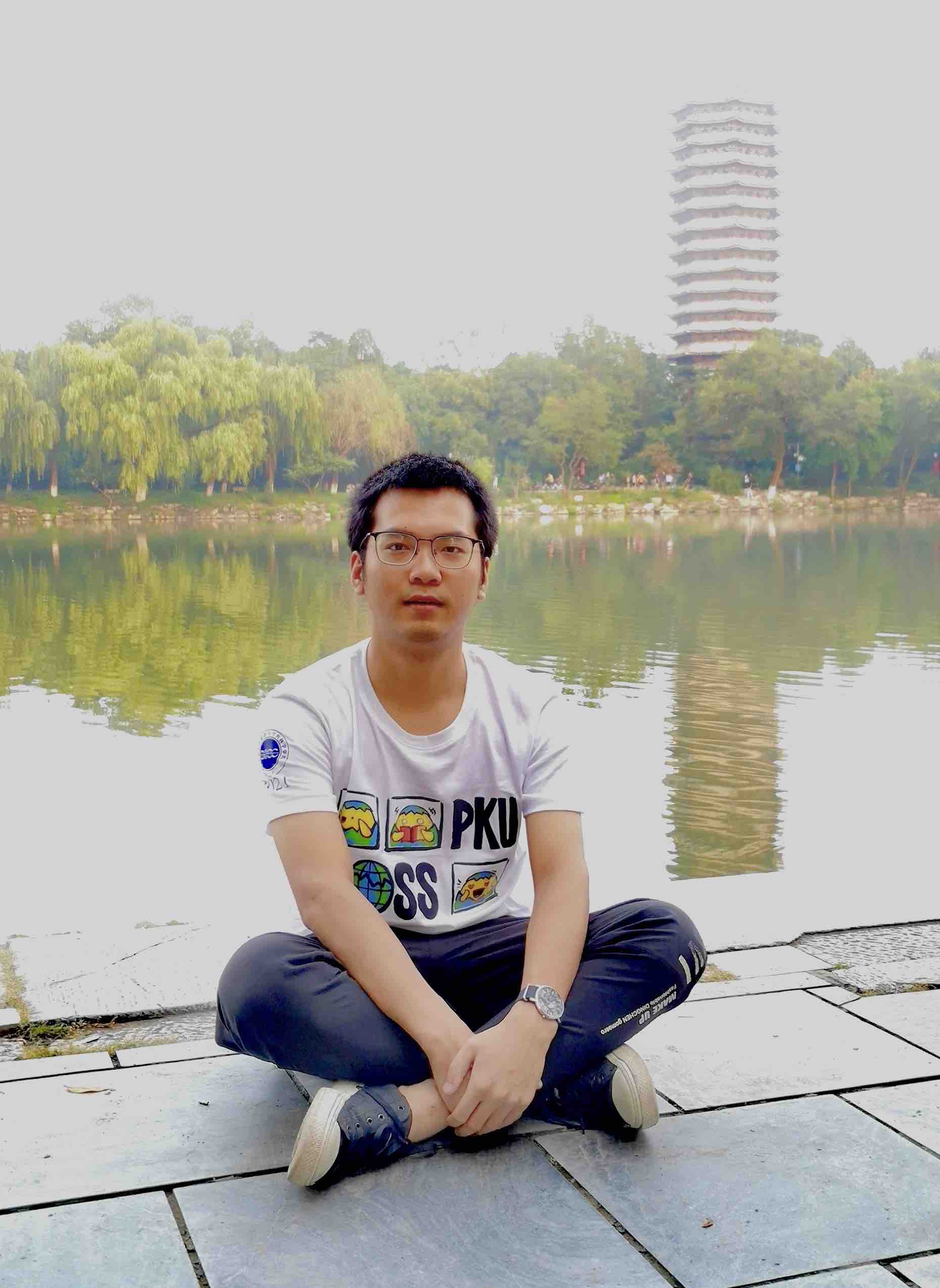
刘威
2021级直博生
研究方向:
虚台站法及断裂带精细结构
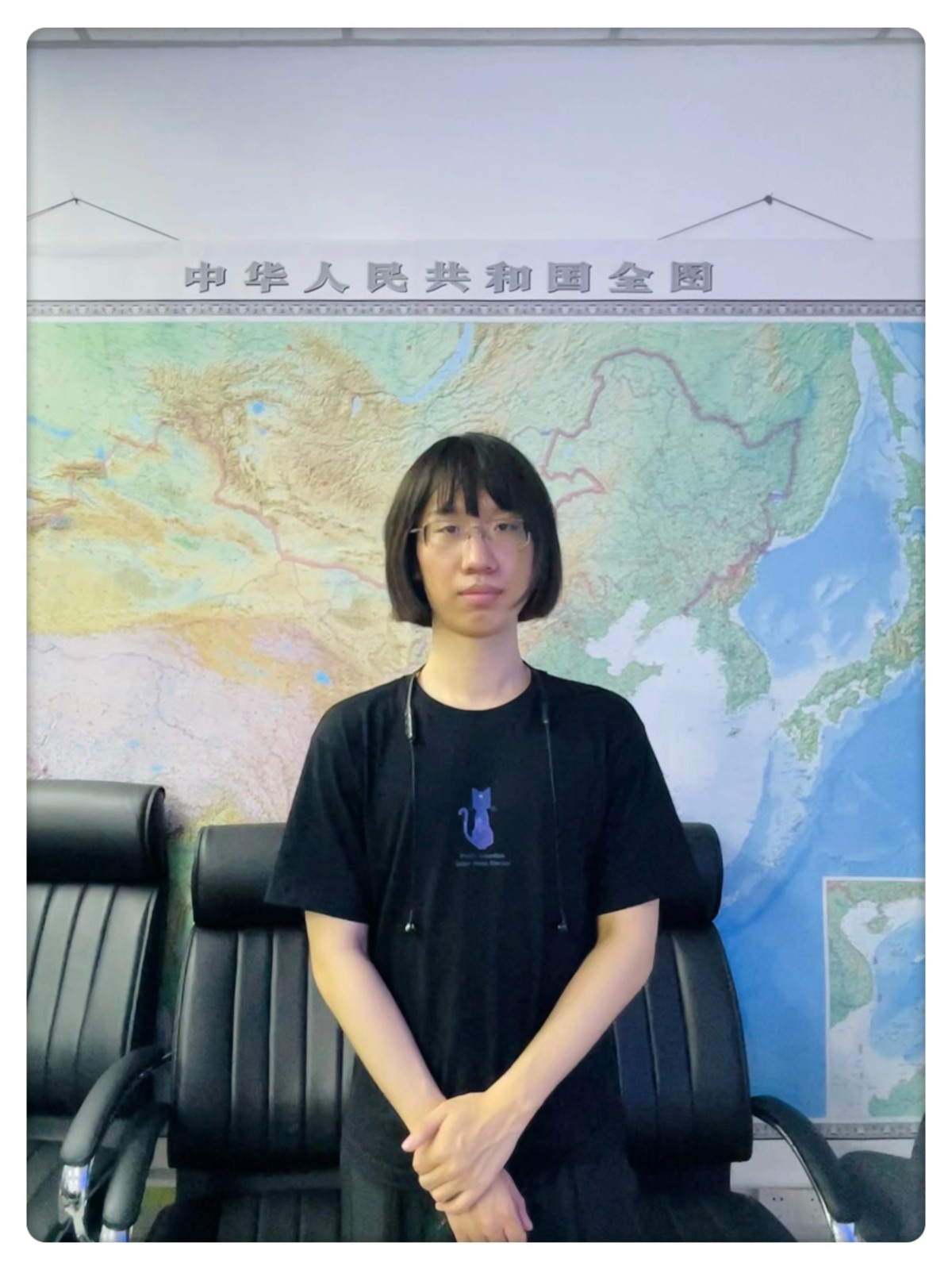 路瑞鹏
路瑞鹏
2022级直博生
研究方向:
中子星Glitch现象的地震成因
地球介质的粘性响应
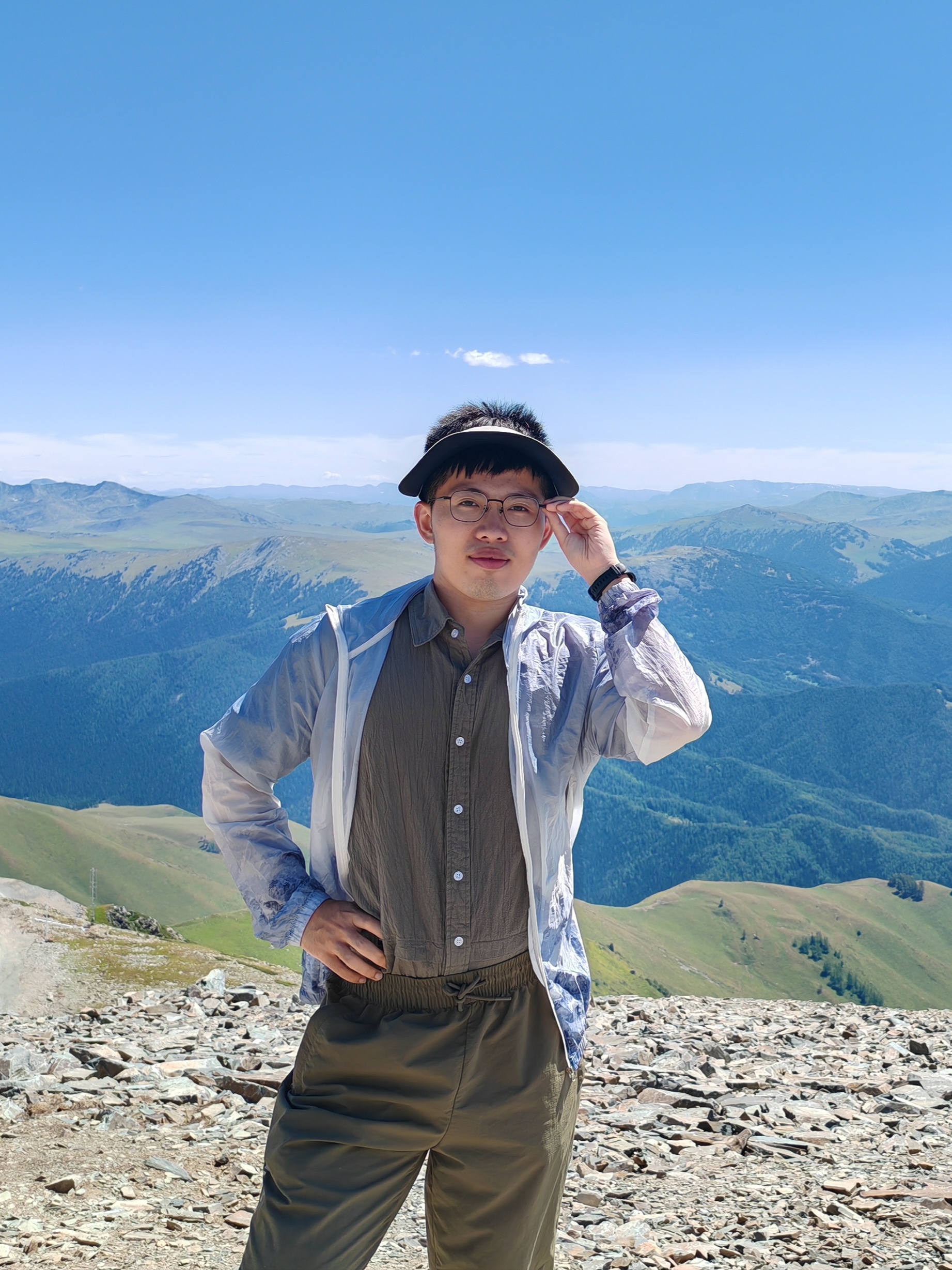 袁源
袁源
2023级直博生
研究方向:
基于Wasserstein 距离的震源全波形反演
毕业研究生
2020届
周一剑 Now at UC Riverside
2021届
贾博 Now a High School Teacher
毕业本科生
2019届
郭慧昀 (Now at UCSC)
2020届
黄丽潼 (Now at UCSC)
2021届
王斌昊 (Now at USC)
陈曦 (Now at ETH)